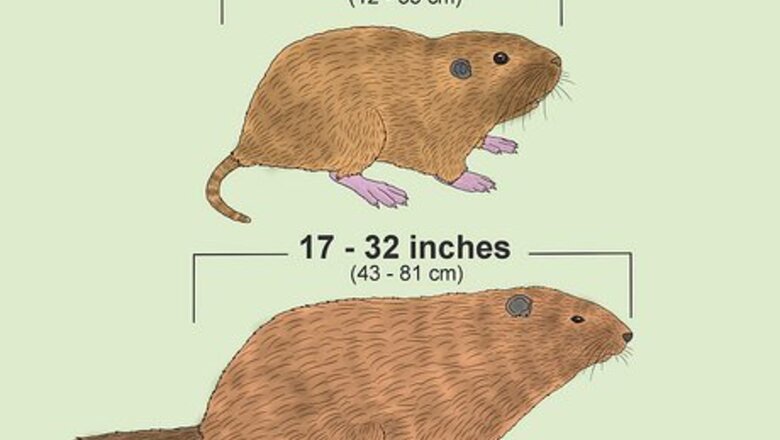
views
- Groundhogs are larger and stockier than gophers and have a more furry, bushy tail.
- Gophers have larger front teeth that remain exposed even when their mouths are closed, unlike groundhogs.
- Gophers rarely leave their tunnels and like to munch on plant roots, while groundhogs roam above ground for leafy plants.
- Gophers create many distinctive, crescent-shaped mounds while groundhogs tend to burrow under sheds and paths.
Size
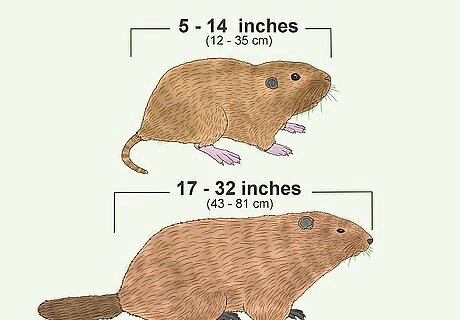
Gophers tend to be smaller and thinner compared to groundhogs. In general, gophers range from about 5 to 14 inches (12-35 cm) long. On the other hand, groundhogs are typically stockier and wider than gophers. They are also larger, ranging from about 17 to 32 inches (43-81 cm) long. While gophers’ bodies are slimmer than groundhogs’, they have round, protruding cheek pouches on their faces, unlike groundhogs.
Tail
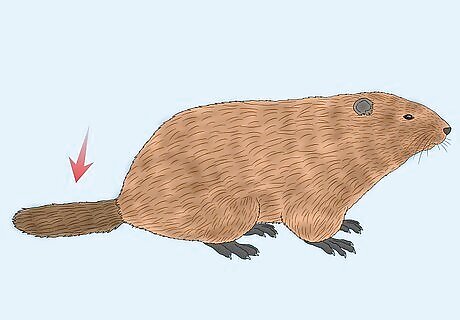
Groundhogs have bushier, hairier tails than gophers. Another easy way to tell the difference between groundhogs and gophers is to look at their tails! Groundhogs have bushy tails like squirrels. They are longer, wider, and furrier than a gopher’s tail. Gophers’ tails have very little hair, often resembling a mouse or rat’s tail.
Feet
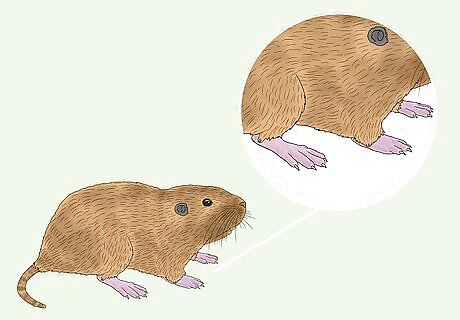
Gophers have pink feet while groundhogs’ feet are dark brown or black. This might be a more subtle difference, but it can be a good way to differentiate these 2 rodents if you can get a closer look. The underside of a gopher’s feet are a soft pink, while a groundhog’s are brown or black.
Teeth
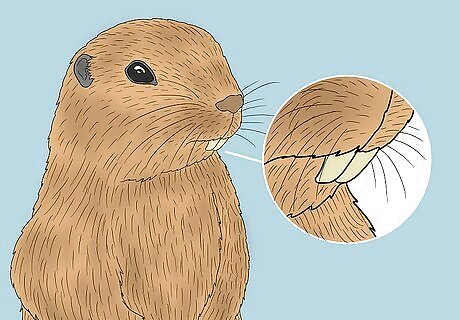
Gophers have large teeth that are almost always visible. Both gophers and groundhogs are rodents that have large front teeth for digging and burrowing. However, a gopher’s front teeth are typically larger and remain visible even when their mouth is closed. Gophers’ teeth also tend to be more yellow than groundhogs’ teeth.
Habitat
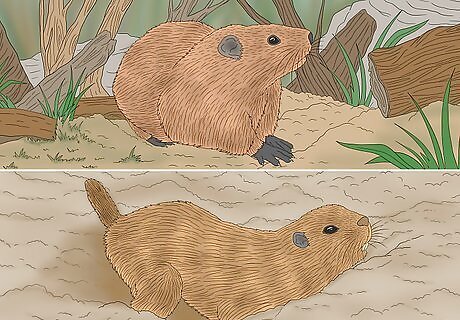
Groundhogs live at forest edges while gophers like areas with sandy soil. Most gophers prefer to build their burrows and tunnels in the grasslands of the Great Plains. On the other hand, groundhogs like to burrow at the edges of forests next to open lands like meadows, fields, and farms. Despite their habitat preferences, both gophers and groundhogs are commonly found throughout North America.
Diet

While both herbivores, gophers prefer roots while groundhogs like leaves. Looking for where damage is on your plants is a great way to tell whether you’re dealing with a gopher or groundhog. Gophers really like eating plants’ roots and stems, which they usually find while they’re underground tunneling. Groundhogs typically only eat the leaves and flowers off plants, though they also love fruit. Adding a border fence around your plants can deter gophers and groundhogs. Use a wire fencing and insert it about 2 feet (60 cm) deep into the ground around your garden. Then, ensure that the fencing extends about 3 feet (91 cm) high above the ground. Gophers are considered herbivores, but they sometimes accidentally eat bugs and beetles as they dig.
Lifestyle
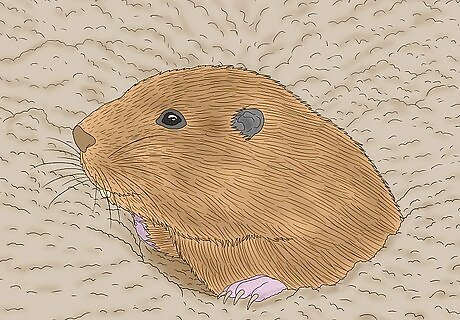
Gophers typically spend more time in their burrows than groundhogs. Gophers prefer to stay in their tunnels, poking their heads out of their mounds every once in a while. You’re less likely to actually see them, while groundhogs tend to stray from their burrows and walk around above ground. While gophers rarely leave their tunnels, groundhogs hibernate underground in the winter. If you do see any animal activity from November through February, you’re probably dealing with a gopher, not a groundhog.
Mounds
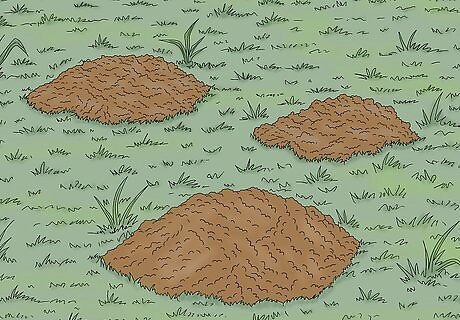
A gopher’s mound is typically more noticeable than a groundhog’s. You’ll know that you’re dealing with a gopher from their distinctive mounds. They dig about 1 to 3 crescent-shaped mounds per day! Groundhogs typically only have one visible mound of dirt, which serves as their main entrance. The other entrances into their tunnels are usually better hidden.
Damage
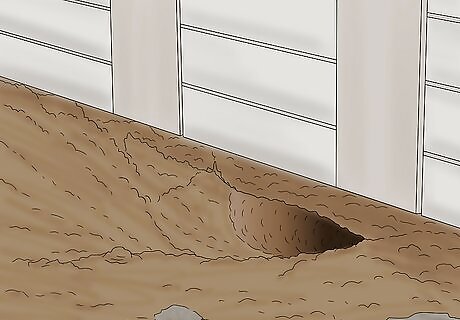
Gophers make unsightly mounds while groundhogs damage structures. Both gophers and groundhogs feast on and damage gardens. However, gophers also leave behind numerous unsightly mounds as they tunnel. A groundhog’s damage usually stems from their burrowing. They’re notorious for burrowing under sheds, porches, and paths which can cause structural damage. Gopher removal: The best way to get rid of gophers is to set a trap in their tunnel. Find the gopher’s main burrow by inserting a gopher probe into a fresh mound. Poke the probe around until you feel the soil give away. Then, use a shovel to dig into the tunnel and insert the gopher trap inside. For a humane way to get rid of gophers, flush their tunnels with a garden hose. This usually works best on new tunnels. Groundhog removal: To get rid of groundhogs in your yard, place a wire cage trap full of apple slides or carrots near their burrow entrance. Once you’ve caught the groundhog, release them about 5 miles (8 km) away from your home or dispose of them humanely.
Classification
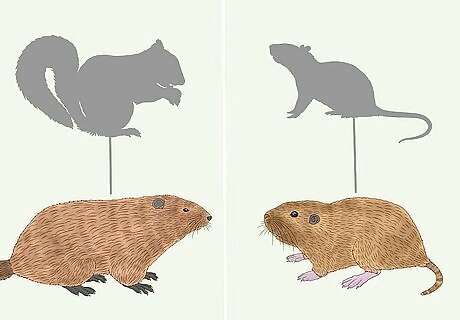
Gophers and groundhogs are rodents that come from different families. They look a lot alike, but these 2 animals aren’t that closely related! Gophers come from the animal family Geomyidae, which certain species of rats are also a part of. On the other hand, groundhogs are in the family Sciuridae. They are actually a species of marmot and a type of squirrel.
Lifespan

Groundhogs typically live longer than gophers. Most groundhogs live for about 2 to 3 years, though they can live for over a decade in captivity. While they don't live much shorter lives than groundhogs, gophers have a lifespan of about 1 to 2 years.


















Comments
0 comment